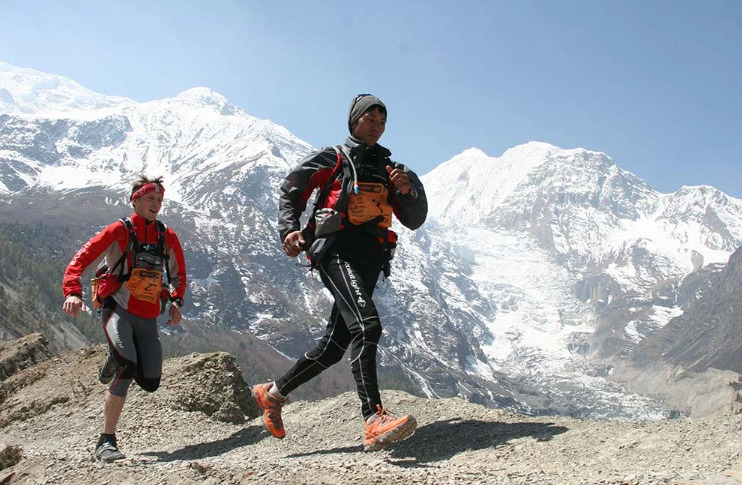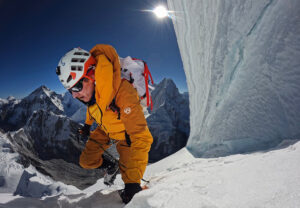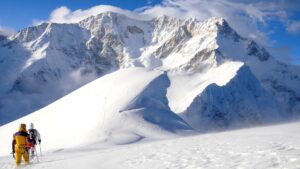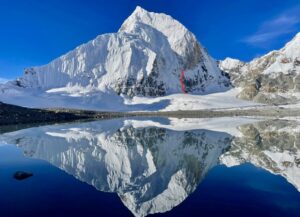The Great Himalayan Trail is a monster trek, the project of a lifetime for long-distance walkers. Still not impressed? Well, try to run it then.
Besides the speed climbers aiming for FKTs (Fastest Known Times) on the familiar giant peaks, ultrarunners are increasingly coming to Nepal to confront the rare challenge of altitude and distance. For trekkers and climbers on their way to base camp, it’s not unusual to see runners whizz by in shorts, sneakers, and sometimes a small backpack.
By far the longest of all the events is the Great Himal Race. This year will mark its second running after the inaugural race in 2017. The route links Hilsa, in western Nepal on the Tibetan border, with Kangchenjunga Base Camp, on the eastern border with Sikkim (India).
The route follows the Great Himalayan Trail, traversing the entire country from west to east. It totals 1,700km and 90,000 vertical meters and includes 14 mountain passes above 5,000m over 64 stages. On 50 of these, the athletes stay in lodges or tents. On the other 14, they must carry all their gear and supplies on their backs.
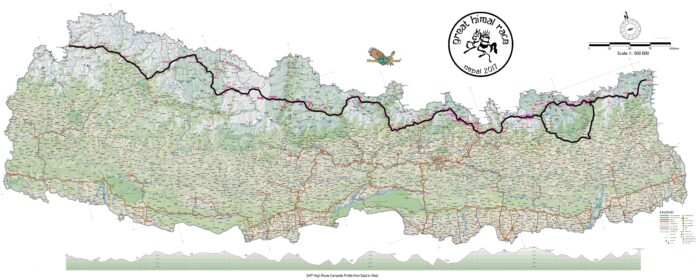
The Great Himal Race across Nepal follows the Great Himalayan trail. Click here for a larger image. Map: Chevaliers de Vent
French runner Bruno Poirier is organizing the race through outfitter Les Chevaliers Du Vent. Twenty-nine runners have signed up, including Poirier.
The participants are a mix of Nepalese and foreign climbers. Yesterday, they started the five-day trek to their starting point at Hilsa.
The race itself begins on April 9 and continues non-stop until May 31, when the survivors arrive at Kangchenjunga Base Camp.
A shorter option
The organizers have also put together a second, shorter version, linking Annapurna Base Camp with Lukla in the Khumbu. This is “just” 850 km and 41,000m vertical gain over 28 stages. It will take place from April 25 to May 23. Read more about it here.
